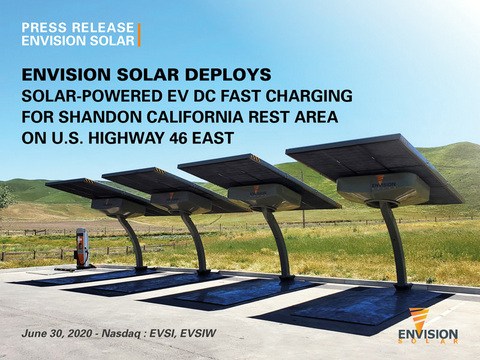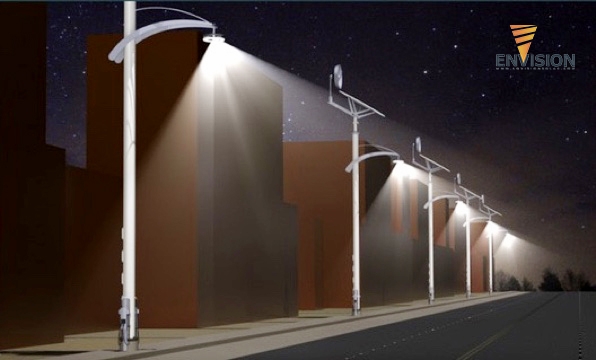Nissan Ariya To Come to U.S. Late Next Year
The Ariya is similar in size to Nissan’s best-selling Rogue crossover, but aimed at a new audience. The all-electric compact SUV will come in front-wheel drive and all-wheel drive (dual motor) versions. It offers two powertrain packages, a 63-kilowatt-hour (kWh) battery pack mated to a single 215-horsepower (hp) electric motor or an 87 kWh battery with 389 total hp from two motors. Range is estimated to be 267 miles for the smaller battery and 379 for the larger one, based on the generous WLTP test cycle. In the U.S., Nissan said it hopes to exceed 300 miles of range with the larger battery in a two-wheel drive configuration. Pricing in the U.S. will be “around $40,000,” according to Nissan.
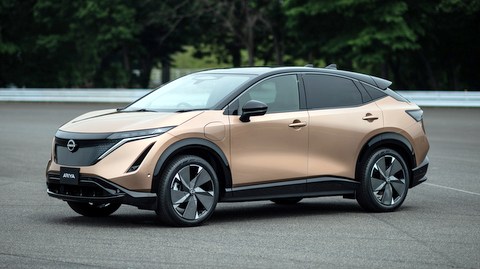
Nissan’s next EV
Inside, the Ariya concept had a minimalist dash with two large (12.3-inch) display screens and haptic-touch control buttons. It will come with the latest version of Nissan’s Safety Shield 360 that will allow some hands-off-the-wheel driving. The Ariya will launch in Japan mid-2021 and arrive in the U.S. market before the end of next year, joining a crowded electric crossover field.
The Ariya will be Nissan’s first full electric model since the Leaf was introduced 10 years ago, but represents the tip of the iceberg for a Nissan new model push, according to COO Ashwani Gupta.
“The Ariya, a key model in Nissan’s plan to roll out 10 new models in 20 months, demonstrates our commitment to meeting customer demand for crossovers with the most advanced electrified, automated and connected technologies,” Gupta said. “The company expects sales of its EVs and E-power electrified models to be more than one million units a year by the end of fiscal 2023. The Ariya will play a significant role in attaining that goal.”
A New Leaf in Nissan’s EV Strategy
Following the Leaf is one challenge for the Ariya, since Nissan has sold almost 500,000 units worldwide during the past decade. But the real target has to be the Tesla Model Y, which was introduced this year, but has yet to take off in sales. Unlike the Ariya, which has the profile of traditional crossover, the Model Y looks more like an expanded sedan. Nissan said the key attribute for the Ariya will be “sports car-like power,” which translates into 0-to-60 mph performance in the 5.1-second range.
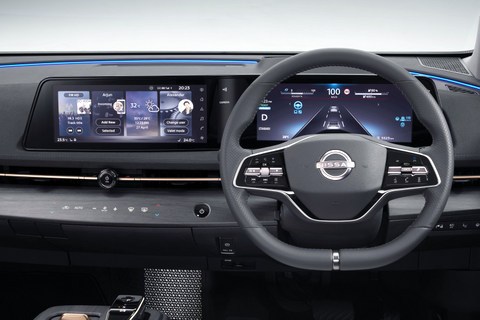
The Ariya has two large displays, but otherwise a minimalist approach
(RHD model show)
Nissan is also promoting the technology that will be available in the Ariya, a logical tie-in with an watershed vehicle like this. Featured will be Nissan’s next-generation ProPilot Assist 2.0 advanced driver assistance system (ADAS) that monitors driver attention to enable hands-off single-lane highway operation. The Ariya will also have a one-pedal operation mode that allows a driver to start, accelerate and decelerate to a stop using only the accelerator pedal.
Among the ADAS included in Nissan Safety Shield 360 are automatic emergency braking with pedestrian detection, rear automatic braking, lane departure warning, blind spot warning, rear cross traffic alert and high beam assist. Other technology offered will be Nissan’s Intelligent Around View Monitor and Intelligent Forward Collision Warning.
Nissan is moving to over-the-air (OTA) updates on Ariya firmware to keep its software current. It will also include the Amazon Alexa app as well as Apple CarPlay and Android Auto to integrate the operator’s smartphone into the vehicle.
Design Elements

More technology means more connectivity
The Ariya represents a new design language for Nissan EVs, which it has labeled Timeless Japanese Futurism. It appears to be a refinement of its existing design patterns externally. Inside, the flat floor enabled by the EV platform and thin-profile Zero Gravity seats make for a more spacious cabin than is found in current ICE models.
Nissan Ariya Specifications
Specs for the Ariya could change by the time the car arrives in the U.S. next year, but this is Nissan’s current configuraton.
Model configurations – Front-wheel drive (FWD) standard and long-range; all-wheel drive (AWD) standard and long-range
Passengers – Two-row, five-passenger
Drive options – FWD or AWD
Platform – New Alliance CMF-EV
Powertrain – Single (FWD) or dual (AWD) electric motors (Externally Excited Synchronous Motors, EESM)
Battery capacity – 63 kWh/87 kWh usable (total 65 kWh/90 kWh)
Thermal management – Active battery management systems
Estimated range – Up to approximately 300 miles (Nissan estimate)
Level 2 charging – Up to 7.2 kW
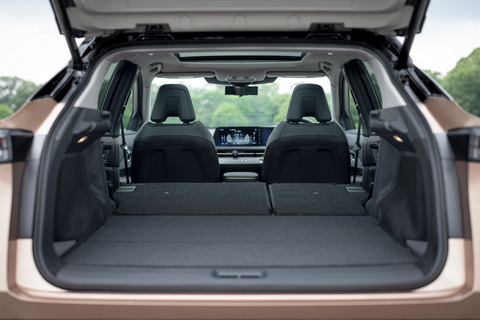
Open up the back and the Ariya looks like most compact crossovers
DC charging – CCS standard up to 130 kW
Output – 160 kW – 290 kW
Torque – 221 pound-feet (lb.-ft.) – 443 lb. ft
Wheelbase – 109.3 inches.
Overall length – 182.9 inches
Overall width – 74.8 inches
Overall height – 65.4 – 65.7 inches (depending on roof rack)
Cargo volume – 16.5 cu. ft. (FWD)/14.6 cu. ft. (AWD)
Wheel size – 19- or 20-inch
Tire size – 235/55$19 or 255/45R20
Story by Michael Coates; photos from Nissan
Related Stories You Might Enjoy—Nissan’s EVs To Date
Road Trip: 2020 Nissan Leaf
Road Test: 2019 Nissan Leaf SV Plus
Road Test: 2019 Nissan Leaf Plus 62 KWH
Road Test: 2019 Nissan Leaf 40 KWH
News: Nissan Expands IM Brand
News: Nissan/Infiniti Concept Cars Point to Future EVs
News: Nissan IMX Crossover Concept
